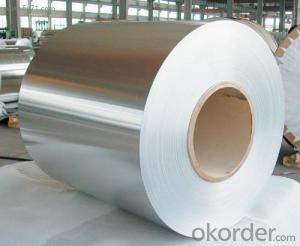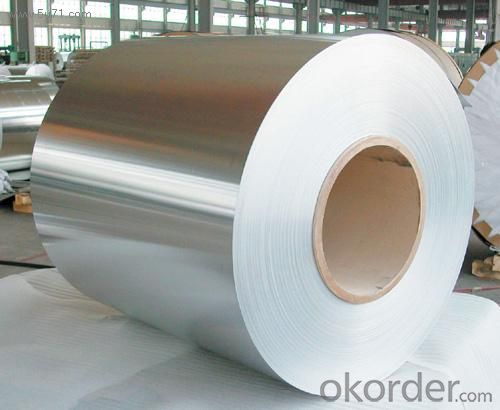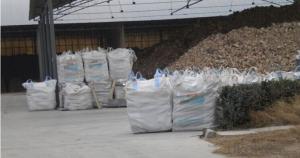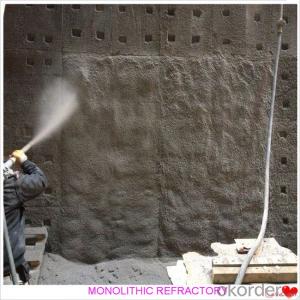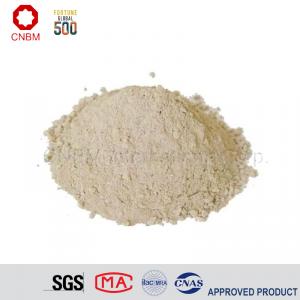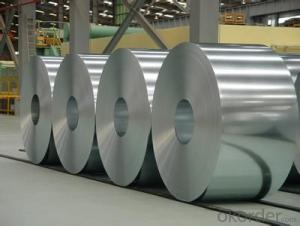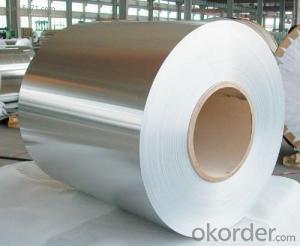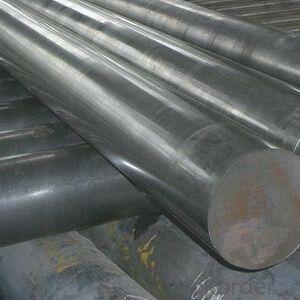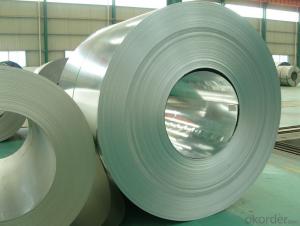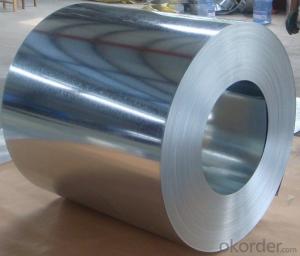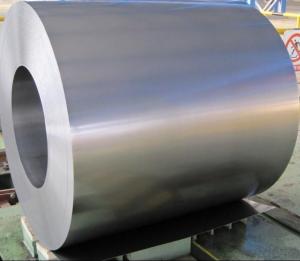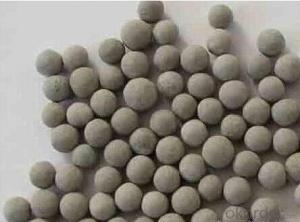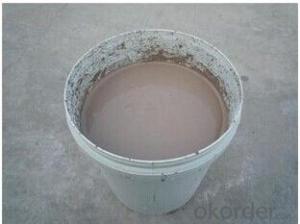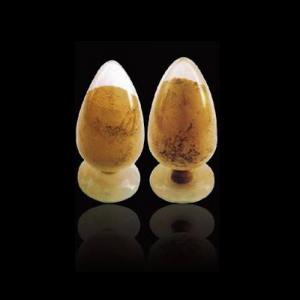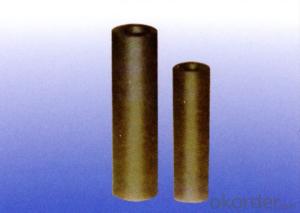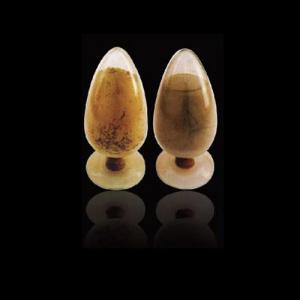Monolithic Refractories for Iron and Steel Industry - Hot-dip Zinc Coating Steel Building Roof Walls with Excellent Process Capability
- Loading Port:
- China main port
- Payment Terms:
- TT OR LC
- Min Order Qty:
- 50 m.t.
- Supply Capability:
- 10000 m.t./month
OKorder Service Pledge
OKorder Financial Service
You Might Also Like
Hot-dip Zinc Coating Steel Building Roof Walls--Excellent Process Capability
1.Structure of Hot-Dip Galvanized Steel Sheet Description:
Hot-dip galvanized steel coils are available with a pure zinc coating through the hot-dip galvanizing process. It offers the economy, strength and formability of steel combined with the corrosion resistance of zinc. The hot-dip process is the process by which steel gets coated in layers of zinc to protect against rust. It is especially useful for countless outdoor and industrial applications. Production of cold formed corrugated sheets and profiles for roofing, cladding, decking, tiles, sandwich walls, rainwater protective systems, air conditioning duct as well as electrical appliances and engineering.
2.Main Features of the Hot-Dip Galvanized Steel Sheet:
• Excellent process capability
• Smooth and flat surface
• Workability, durability
• Good visual effect
3.Hot-Dip Galvanized Steel Sheet Images
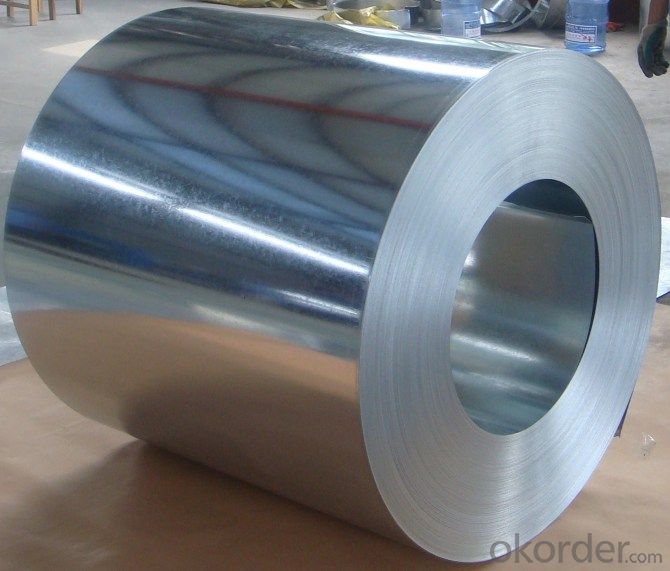
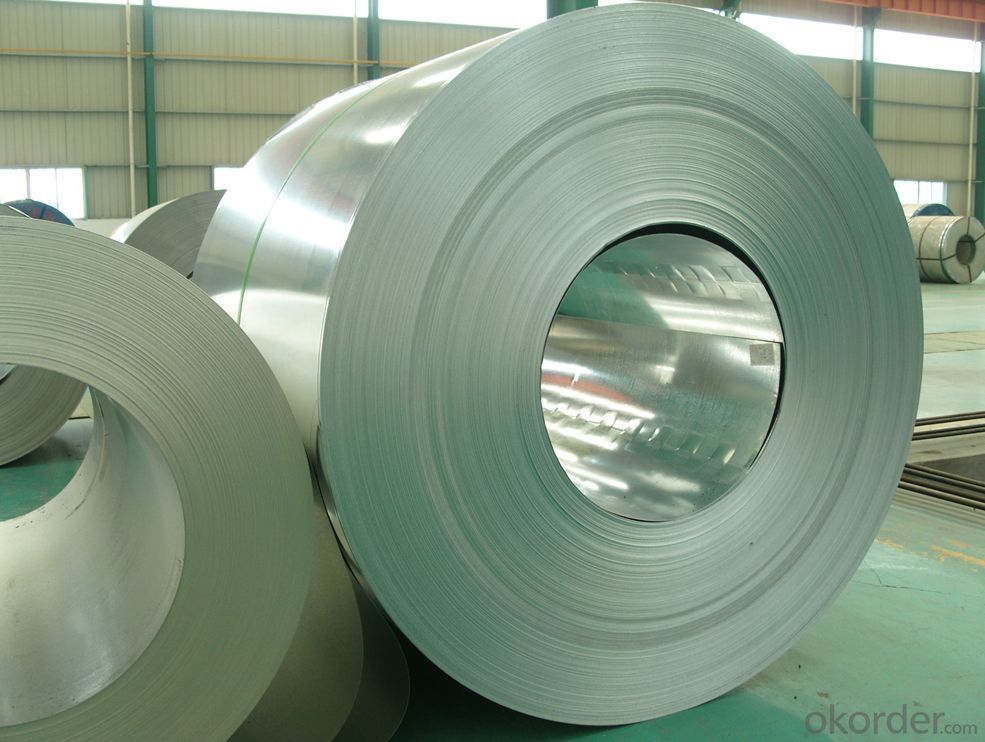
4.Hot-Dip Galvanized Steel Sheet Specification
Standard: ASTM, JIS,EN
Grade: CS, DX51D+Z,SGCC, SS 230~550,S220GD+Z~S550GD+Z, SGC340~SGC570
Thickness: 0.18mm~5mm
Width: max 2000mm
Coil weight:3-12 MT
Coil ID:508/610mm
Surface structure: zero spangle, regular spangle or minimum spangle
Surface treatment: Chromate treatment, Oiled/dry, skinpassed/non-skinpassed
5.FAQ of Hot-Dip Galvanized Steel Sheet
1.How to guarantee the quality of the products?
We have established the international advanced quality management system,every link from raw material to final product we have strict quality test.
2. How long can we receive the product after purchase?
Usually within thirty working days after receiving buyer’s advance payment or LC. We will arrange the factory manufacturing as soon as possible. The cargo readiness usually takes 15-30 days, but the shipment will depend on the vessel situation.
- Q: How do monolithic refractories resist abrasion in the iron and steel industry?
- Monolithic refractories, with their unique composition and properties, are specifically designed for the iron and steel industry to resist abrasion. Made from a single homogeneous material, they exhibit exceptional strength and durability when subjected to continuous abrasion. The high density of monolithic refractories is one of the key factors contributing to their abrasion resistance. These refractories are manufactured with tightly packed particles, resulting in a solid and compact structure. This density minimizes wear and tear caused by the constant movement of materials like iron and steel. Furthermore, monolithic refractories often contain high levels of alumina, known for its excellent resistance to abrasion. Alumina is a highly refractory material that can withstand high temperatures and mechanical stress without deteriorating. Its presence in monolithic refractories creates a protective layer that resists abrasion caused by the movement and impact of iron and steel particles. In addition, monolithic refractories can be designed with specific additives and binders that further enhance their resistance to abrasion. These additives may include silicon carbide, mullite, or zirconia, which are renowned for their superior mechanical strength and ability to withstand wear. The binders used in the manufacturing process also contribute to the refractory's integrity and its ability to resist abrasion by providing a cohesive structure. In conclusion, the combination of high density, alumina content, specialized additives, and binders makes monolithic refractories highly resistant to abrasion in the iron and steel industry. They can withstand the harsh conditions and constant movement of materials, ensuring long-lasting performance and efficiency in various applications within the industry.
- Q: How do monolithic refractories contribute to the overall efficiency of ladle transfer processes?
- Monolithic refractories play a crucial role in enhancing the overall efficiency of ladle transfer processes. These refractories are made of a single, homogeneous material, which allows for easy installation and maintenance. This feature significantly reduces downtime during the ladle transfer process, resulting in increased productivity. One way monolithic refractories contribute to efficiency is through their high thermal conductivity. Ladle transfer processes involve the transfer of molten metal, which generates immense heat. Monolithic refractories have excellent heat resistance, ensuring that they can withstand the extreme temperatures of the molten metal. This property prevents refractory failure and prolongs the lifespan of the ladle, leading to more efficient and uninterrupted ladle transfer operations. Additionally, monolithic refractories offer superior corrosion resistance. The corrosive nature of molten metal can cause significant damage to ladles over time. However, monolithic refractories are designed to withstand chemical attacks from molten metal, preventing the degradation of the ladle's integrity. As a result, ladles lined with monolithic refractories have a longer lifespan and require less frequent replacement, leading to cost savings and improved efficiency. Furthermore, the ability of monolithic refractories to conform to complex shapes and designs is another contributing factor to the efficiency of ladle transfer processes. Ladles come in various sizes and shapes, and the use of monolithic refractories allows for customized linings that perfectly fit the ladle's dimensions. This precise fit minimizes heat loss and maximizes energy efficiency during ladle transfer processes. Moreover, monolithic refractories offer excellent mechanical strength and resistance to thermal shock. Ladle transfer processes involve the handling and movement of ladles, which can subject refractories to mechanical stresses. The outstanding mechanical properties of monolithic refractories ensure their durability and prevent cracking or spalling, reducing the risk of refractory failure and improving the efficiency of ladle transfer operations. In summary, monolithic refractories contribute to the overall efficiency of ladle transfer processes by providing high thermal conductivity, corrosion resistance, precise lining fit, and excellent mechanical properties. These refractories enhance the ladle's durability, reduce downtime, and improve energy efficiency, resulting in cost savings and increased productivity in the steelmaking industry.
- Q: How do monolithic refractories help in enhancing the durability of iron and steel furnaces?
- Monolithic refractories help enhance the durability of iron and steel furnaces by providing a high heat resistance and superior thermal insulation. They have the ability to withstand extreme temperatures, reducing the risk of thermal shock and cracking. Monolithic refractories also have excellent corrosion resistance, preventing chemical reactions with molten metal and slag. Their strong bonding properties ensure a tight seal, minimizing heat loss and improving energy efficiency. Overall, monolithic refractories contribute to the longevity and reliability of iron and steel furnaces by protecting them from the harsh conditions of high-temperature operations.
- Q: What are the challenges in recycling monolithic refractories?
- Recycling monolithic refractories presents several challenges that complicate the process compared to other materials. To begin with, the exceptional resistance of monolithic refractories to high temperatures and harsh conditions makes them difficult to break down and separate. Specialized techniques and equipment are required for this purpose. Furthermore, monolithic refractories often contain various additives and binders, such as clay, cement, and other organic compounds. These additional substances add complexity to the recycling process, as they may need to be removed or separated from the refractory material before effective recycling can take place. Moreover, monolithic refractories are prone to contamination during their service life, with metal oxides, slag, and impurities being common culprits. These contaminants can affect the quality and properties of the recycled refractory material, necessitating thorough cleaning and purification procedures. Additionally, the logistics involved in collecting and transporting monolithic refractories for recycling can be challenging. Given that refractories are typically used in large quantities in industrial settings, their removal and transportation can be costly and time-consuming. Furthermore, finding suitable recycling facilities equipped with the necessary expertise and equipment to handle monolithic refractories can be limited, particularly in certain regions. Lastly, economic factors contribute to the challenges of recycling monolithic refractories. The financial viability of recycling and processing these refractories may not always justify the cost compared to using new materials. Consequently, companies may be discouraged from investing in recycling programs, leading to lower demand for recycled refractory materials. In summary, the challenges associated with recycling monolithic refractories primarily arise from their durability, complex composition, contamination, logistics, and economic considerations. Nonetheless, with technological advancements and increased awareness of the environmental benefits of recycling, these challenges can be overcome, promoting the sustainable reuse of refractory materials.
- Q: How do monolithic refractories respond to changes in thermal conditions?
- Monolithic refractories have the ability to withstand and adapt to changes in thermal conditions. They have a high thermal shock resistance, meaning they can handle rapid changes in temperature without cracking or breaking. Additionally, they exhibit good thermal conductivity, allowing them to efficiently conduct and distribute heat. Overall, monolithic refractories demonstrate a stable and reliable response to changes in thermal conditions.
- Q: How can the lifespan of monolithic refractories be extended?
- The lifespan of monolithic refractories can be extended through proper installation techniques, regular maintenance, and careful handling.
- Q: How do monolithic refractories enhance the performance of ladle and tundish preheating systems?
- There are several ways in which monolithic refractories play a crucial role in improving the performance of ladle and tundish preheating systems. To begin with, monolithic refractories possess outstanding thermal insulation properties, which aid in retaining heat within the ladle and tundish preheating systems. This insulation ability reduces heat loss and ensures that the preheating systems operate at optimal temperatures. By maintaining a consistent and high heat level, monolithic refractories enable efficient preheating of ladles and tundishes, thereby reducing the time required for the preheating process. Furthermore, monolithic refractories exhibit high refractoriness, enabling them to withstand extreme temperatures without significant degradation. This is especially important for ladle and tundish preheating systems that endure intense heat during operation. The capacity of monolithic refractories to withstand high temperatures ensures their longevity and prevents premature failure, resulting in enhanced performance and reliability of the preheating systems. Moreover, monolithic refractories possess exceptional resistance to thermal shock. The preheating process often subjects ladles and tundishes to rapid temperature changes, which can cause thermal stress and lead to cracking and spalling of the refractory lining. However, monolithic refractories, with their superior resistance to thermal shock, can endure these rapid temperature fluctuations without sustaining significant damage. This resistance guarantees the integrity of the refractory lining, extending the lifespan of the ladle and tundish preheating systems and improving their overall performance. Additionally, monolithic refractories offer good mechanical strength and abrasion resistance. Ladles and tundishes frequently experience mechanical forces, such as stirring and pouring of molten metal. The presence of monolithic refractories with high mechanical strength and abrasion resistance ensures the integrity of the refractory lining even under harsh conditions. This durability allows for prolonged and efficient operation of the preheating systems, contributing to their enhanced performance. In conclusion, monolithic refractories enhance the performance of ladle and tundish preheating systems through their excellent thermal insulation, high refractoriness, resistance to thermal shock, and good mechanical strength and abrasion resistance. These properties enable efficient and reliable preheating, minimize heat loss, prevent premature failure, and prolong the lifespan of the preheating systems, ultimately improving their overall performance.
- Q: How do monolithic refractories contribute to the overall efficiency of ladle cleaning operations?
- Monolithic refractories play a crucial role in enhancing the overall efficiency of ladle cleaning operations. These refractory materials, which are composed of a single, homogeneous structure, offer several key advantages that contribute to improved efficiency. Firstly, monolithic refractories have excellent thermal insulation properties. This means they can withstand high temperatures without cracking or deteriorating, allowing for more efficient and effective ladle cleaning operations. By maintaining a consistent temperature, these refractories minimize heat loss and ensure that the cleaning process can be carried out without interruptions or delays. Secondly, monolithic refractories have high resistance to chemical attacks. Ladles used in steelmaking processes often come into contact with aggressive molten metals and slag, which can erode and corrode the refractory lining. However, monolithic refractories are specifically designed to withstand these harsh conditions, ensuring a longer service life and reducing the need for frequent repairs or replacements. This not only saves time but also reduces the overall cost of ladle maintenance. Furthermore, monolithic refractories have excellent flowability and workability. They can be easily shaped and installed in the ladle lining, allowing for quick and precise application. This ease of installation translates into shorter downtime during ladle cleaning operations, as the refractory lining can be repaired or replaced swiftly. Additionally, the flowability of monolithic refractories enables better coverage and adherence to the ladle's surface, ensuring that no gaps or weak points are left behind. This enhances the overall effectiveness of the cleaning process and prevents any potential contamination or reactivity issues. In conclusion, monolithic refractories contribute to the overall efficiency of ladle cleaning operations by providing excellent thermal insulation, high resistance to chemical attacks, and easy workability. These properties result in reduced downtime, increased durability, and cost savings, making monolithic refractories a vital component in optimizing ladle cleaning processes.
- Q: How do monolithic refractories improve the performance of iron and steel furnaces?
- Monolithic refractories play a crucial role in enhancing the performance of iron and steel furnaces through various means. Firstly, these refractories offer exceptional thermal insulation, which helps maintain a stable and high temperature within the furnace. This is of utmost importance as the production of iron and steel necessitates extremely high temperatures for efficient melting and refining processes. Secondly, monolithic refractories possess remarkable resistance to thermal shock and can endure rapid temperature fluctuations without cracking or spalling. This is particularly significant in iron and steel furnaces where temperature fluctuations can be substantial during operations. By withstanding thermal shock, these refractories ensure the durability of the furnace lining, thereby reducing the need for maintenance and minimizing downtime. Moreover, monolithic refractories display excellent resistance to chemical attacks caused by the molten metal and slag in the furnace. The production of iron and steel involves the use of various chemical agents that can corrode and erode the furnace lining. Monolithic refractories offer superior resistance to these chemical attacks, preserving the integrity of the furnace lining and preventing contamination of the metal being produced. Additionally, monolithic refractories possess exceptional mechanical strength and abrasion resistance. This is crucial as they are subjected to mechanical stresses and wear resulting from the movement of materials inside the furnace, such as charging and tapping operations. The high mechanical strength and abrasion resistance of these refractories ensure their durability and prolong their service life in iron and steel furnaces. In conclusion, monolithic refractories enhance the performance of iron and steel furnaces by providing superior thermal insulation, resistance to thermal shock and chemical attacks, as well as high mechanical strength and abrasion resistance. These properties contribute to the efficient and reliable operation of the furnace, resulting in increased productivity, reduced maintenance costs, and improved product quality.
- Q: How do monolithic refractories improve the efficiency of ladle and tundish drying furnaces?
- Monolithic refractories improve the efficiency of ladle and tundish drying furnaces in several ways. Firstly, monolithic refractories offer a high degree of thermal insulation. These refractories have low thermal conductivity, which means they can effectively reduce heat transfer from the furnace to the surrounding environment. This insulation property helps to minimize heat losses, allowing the furnace to maintain a higher temperature for a longer period of time. As a result, the drying process becomes more efficient as the heat is retained within the furnace, reducing the overall energy consumption. Secondly, monolithic refractories have excellent resistance to thermal shock. During the heating and cooling cycles of the furnace, rapid temperature changes can cause stress and cracks in the refractory material. However, monolithic refractories are designed to withstand these thermal shocks and maintain their structural integrity. This durability ensures a longer lifespan of the refractory lining, reducing the need for frequent repairs or replacements. Consequently, the furnace operates at optimal efficiency without the downtime associated with maintenance. Additionally, monolithic refractories provide good mechanical strength and abrasion resistance. These properties are crucial in ladle and tundish drying furnaces, as they are exposed to mechanical stresses and abrasive materials such as molten metal and slag. The use of monolithic refractories ensures that the lining can withstand these harsh conditions without undergoing structural damage. This resistance to wear and tear increases the overall efficiency of the furnace, as it can operate for longer periods without interruptions. Lastly, monolithic refractories offer greater design flexibility compared to traditional brick or tile refractories. Their ability to be cast or gunned onto the lining surface allows for easy installation and repair. This flexibility enables the furnace to be customized and adapted to specific requirements, ensuring optimal heat distribution and efficient drying processes. In conclusion, monolithic refractories improve the efficiency of ladle and tundish drying furnaces through their thermal insulation, resistance to thermal shock, mechanical strength, and design flexibility. By reducing heat losses, increasing durability, withstanding harsh conditions, and allowing for easy installation and repair, these refractories optimize the performance and energy efficiency of the furnaces.
Send your message to us
Monolithic Refractories for Iron and Steel Industry - Hot-dip Zinc Coating Steel Building Roof Walls with Excellent Process Capability
- Loading Port:
- China main port
- Payment Terms:
- TT OR LC
- Min Order Qty:
- 50 m.t.
- Supply Capability:
- 10000 m.t./month
OKorder Service Pledge
OKorder Financial Service
Similar products
Hot products
Hot Searches
Related keywords
